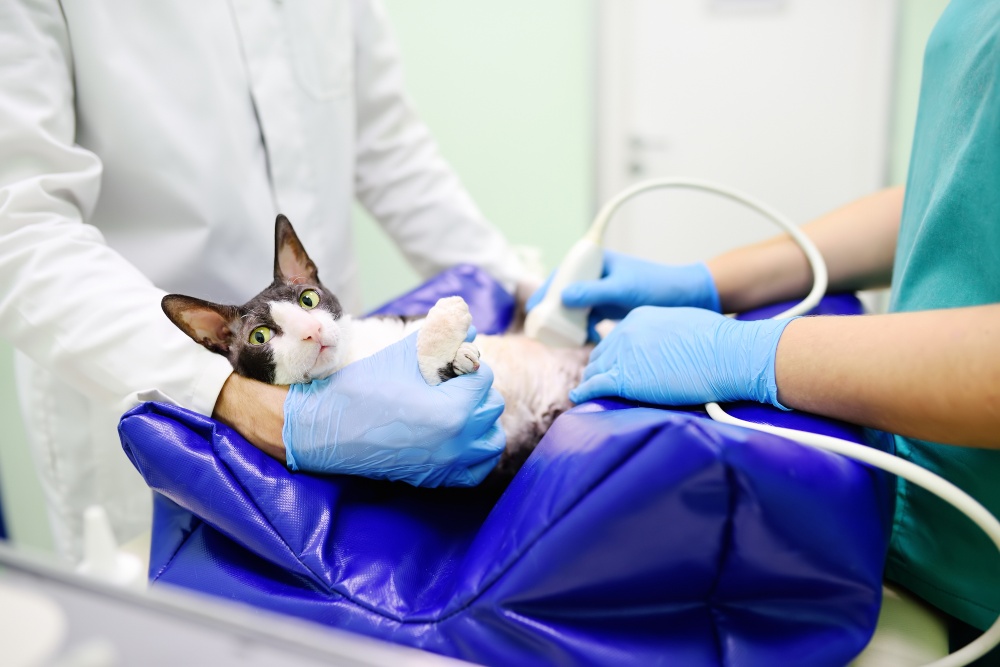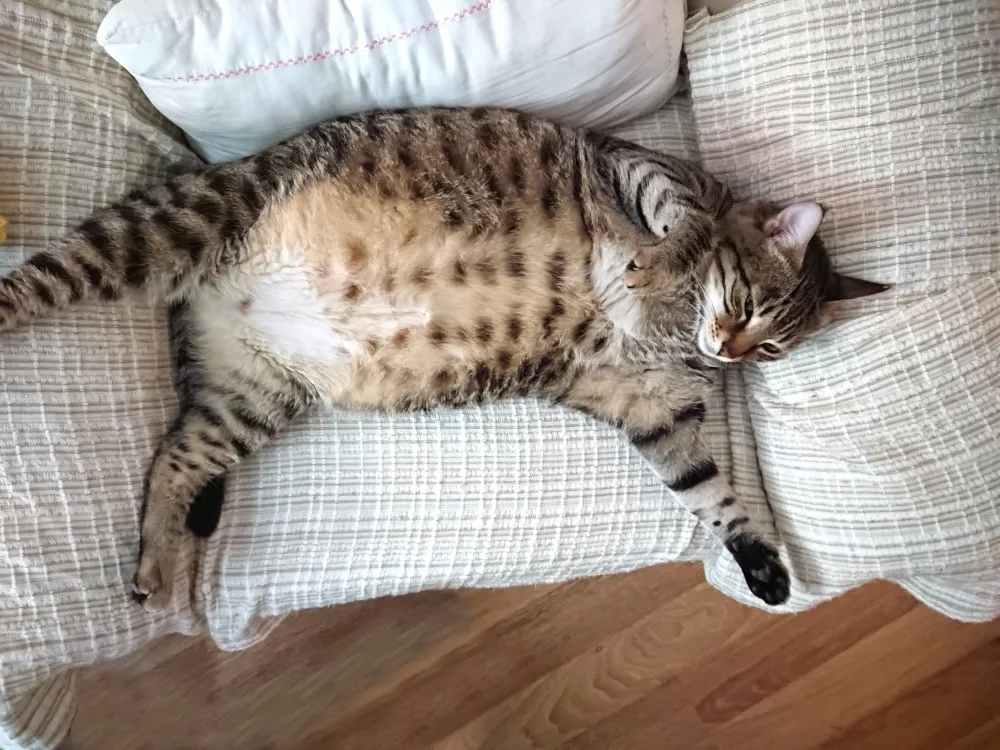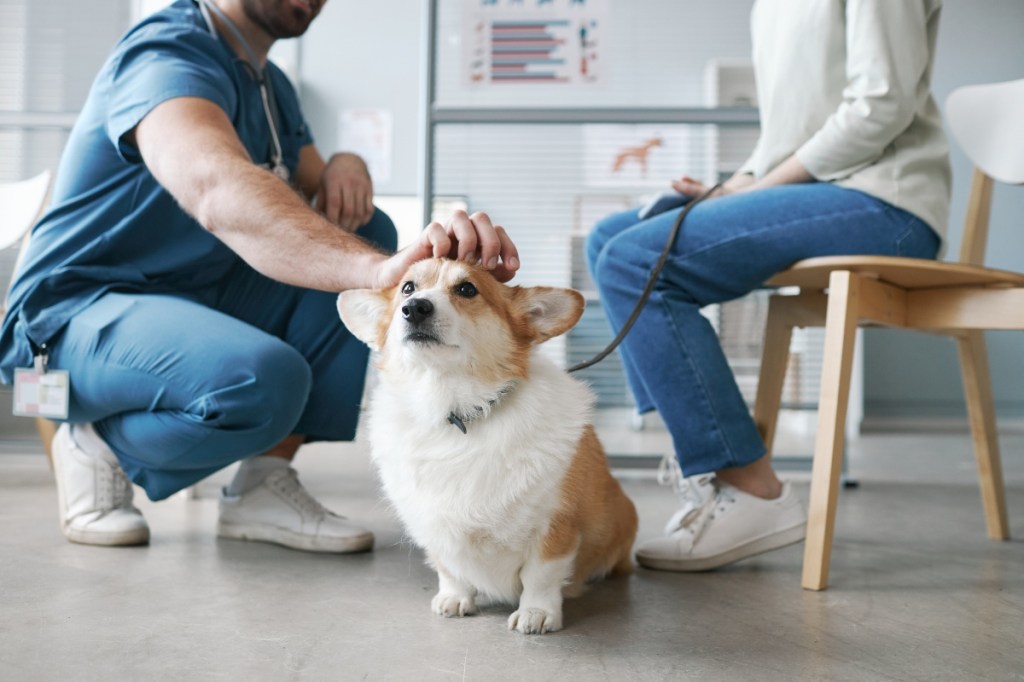Table of Contents
Most pet cats in the United States are spayed at around four months of age. Sometimes, however, cat owners opt to postpone this surgery. Whether it’s due to scheduling conflicts, financial considerations, or simply forgetting to make the appointment, waiting to have your cat spayed carries a risk of unintended pregnancy.
Cats can enter their first heat cycle as early as six months of age. (There are rare reports of cats as young as 4.5 months old going into heat!) An in-heat cat that slips outdoors or otherwise encounters an intact male cat, even briefly, can become pregnant.
If you own an intact (non spayed) female cat that is six months of age or older, it’s important to be able to recognize signs of feline pregnancy. Additionally, you need to know what to do in the event that your cat becomes pregnant and how to recognize signs that may indicate the need for veterinary intervention.
Signs of Pregnancy in Cats
The first few weeks
The average feline pregnancy is nine weeks or 63 days long, although pregnancy may be as short as 58 days or as long as 70 days. In the first few weeks of pregnancy, you are unlikely to notice any visible changes in your cat. Unless you know that she was bred during her last heat cycle, you may have no reason to suspect that she is pregnant.
Month one
Beginning one month into your cat’s pregnancy, you might notice her belly becoming more round in shape. This change is more obvious in young, thin cats. In an overweight or obese cat, you may not notice any body shape changes at all, even in late pregnancy.
Month two
One to two months into your cat’s pregnancy, you might notice that her nipples are becoming more prominent. They may be larger and more intensely pink in color. This change occurs as your cat’s mammary glands prepare for nursing kittens.
Month three
In the final one to two weeks of pregnancy, your cat might begin to demonstrate nesting behaviors. You may notice that your cat has found a quiet area of your home and is hiding more often. Some cats arrange blankets to create a nest for their kittens. During this time, your cat may also become more or less affectionate towards you and other pets in your home.
All of these changes can be subtle. In some cases, cat owners do not see any of these signs, and their first indication of pregnancy is the discovery of live kittens! However, if you notice that your cat has a swollen belly, prominent nipples, or is demonstrating nesting behavior, these changes could suggest that your cat is pregnant.
Pregnancy Testing in Cats
Physical examination
If you are seeing signs that suggest your cat may be pregnant, schedule a visit with your veterinarian. Your veterinarian will begin by performing a physical examination on your cat. They will assess your cat’s overall health, then feel her abdomen to see if they can palpate any uterine changes that might suggest pregnancy. Pregnancy can be palpated as early as three to four weeks after breeding, if your cat is thin and a relaxed patient. Cats that are tense or overweight may make pregnancy palpation a challenge, especially in the early stages of pregnancy.
 Pregnancy ultrasound
Pregnancy ultrasound
Ultrasound can also be used to diagnose a feline pregnancy at a relatively early stage. Pregnancy can often be seen on an ultrasound as soon as two to three weeks post-breeding. Ultrasound is not reliable for counting the number of kittens that are present, but can be used to confirm whether or not a cat is pregnant.
X-Rays
Radiographs (x-rays) can typically detect pregnancy at approximately 6 weeks post-breeding. This is the point at which the fetal skeletons begin to mineralize, allowing your veterinarian to see each kitten individually. Radiographs are the most reliable way to determine your cat’s expected litter size, although counts obtained on radiographs are sometimes misleading.
Caring for Your Pregnant Cat
Feed a good diet
Pregnant cats require a diet that will meet both their nutritional needs and the needs of their growing kittens. Talk to your veterinarian to determine an appropriate diet for your cat during this period. In general, a high-quality kitten food is the best diet for a pregnant cat.
Create a cozy birthing spot
Prior to birth, ensure that your cat has a quiet area to deliver her kittens. Place a box or laundry basket, lined with soft blankets, in a dark, quiet area of your home. Be aware, however, that your cat may or may not decide to use the area that you have set up for her. Many owners set up a birthing area in one area of their house, only to have their cat deliver her kittens somewhere completely different.
Your cat in labor
Most cats are able to give birth with little or no assistance. If you notice that your cat has been having active contractions for more than one hour without producing kittens, is having bloody discharge, is showing signs of pain, or otherwise appears to be in distress, however, you should call your veterinarian or local veterinary emergency hospital immediately. Your cat may need emergency medical assistance.
After delivery, the kittens and queen should be kept together. Avoid separating them for the first few weeks of life. She will meet all of their nutritional needs through nursing, which means she will need to remain on a high-quality, nutritious diet to support milk production.
Schedule a veterinary visit for the kittens when they are six weeks old. At this time, the kittens will each receive a physical examination, deworming, and their first set of vaccinations.
Pregnancy Prevention in Cats
Due to the risks inherent in birthing, as well as the cat overpopulation crisis in the United States, any cat that is not intended for breeding should be spayed or neutered before reaching sexual maturity. Spaying your cat not only prevents unintended pregnancy, it also protects your cat’s health. Spaying your cat will significantly decrease her risk of mammary cancer (breast cancer) and eliminate the risk of pyometra (a potentially life-threatening uterine infection).
If your cat has reached sexual maturity and is not yet spayed, ensure that she remains indoors at all times and is not allowed access to intact male cats. Even a single trip outdoors could result in pregnancy; stray male cats will travel over a mile to reach a female cat that is in heat.
If your cat is pregnant or has recently had kittens, talk to your veterinarian about the optimal time to have her spayed. In most cases, a cat can be spayed as soon as her kittens are weaned.
Summary
- All female cats should be spayed prior to their first heat cycle, and pregnancy can occur when this surgery is delayed.
- The signs of pregnancy in cats may be subtle, but can include swelling of the belly, changes in nipple size and color, and the demonstration of nesting behavior.
- Your veterinarian may be able to diagnose your cat’s pregnancy as early as two to three weeks post-breeding, and radiographs are often taken six weeks into your cat’s pregnancy to determine how many kittens your cat is expecting.
- As your cat approaches her delivery date, ensure that she has access to a quiet area for birthing.
- Ensure that you are ready to help monitor her delivery and seek veterinary care if necessary.
The content is not intended to be a substitute for professional veterinarian advice, diagnosis, or treatment. Always seek the advice of your veterinarian or other qualified health provider with any questions you may have regarding a medical diagnosis, condition, or treatment options.






